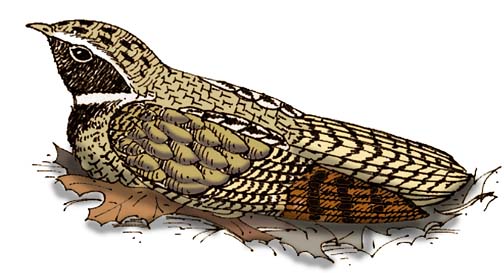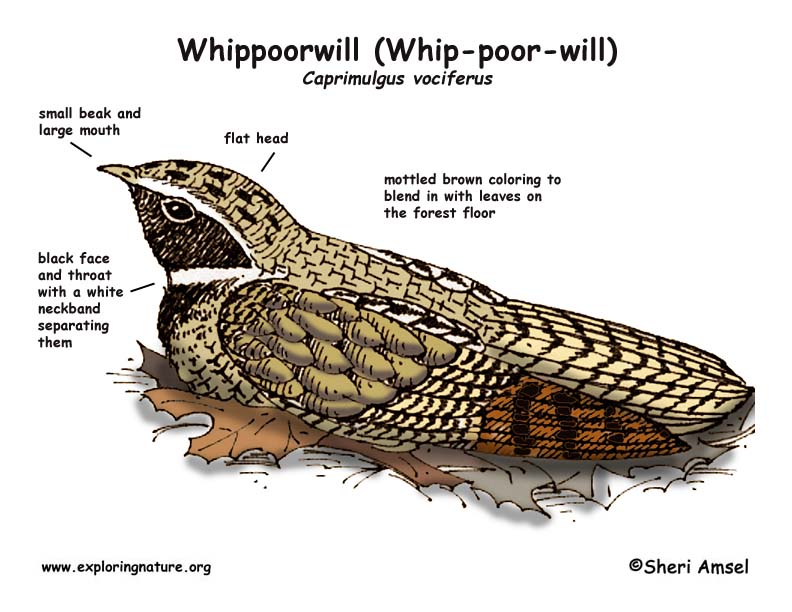

They breed from central Canada east to the Atlantic coast and south to Georgia and in small pockets in the southwestern U.S. to Central America. They winter in the southeastern U.S. into Central America.
They live in open woodlands near fields.
They are a mottled brown bird with a small beak and large mouth. They have a flat head. They have a black face and throat separated by a white neckband. Their colors make them blend in really well with the forest floor. Males and females look alike.
They are nocturnal, calling at dusk.
They eat moths and other insects caught in flight.
They don’t make a nest. Female lays 2 cream-colored eggs with spots on the leaf litter.
Kingdom: Animalia
Phylum: Chordata
Subphylum: Vertebrata
Class: Aves
Order: Caprimulgiformes
Family: Caprimulgidae/Subfamily: Caprimulginae
Genus: Caprimulgus
Species: C. vociferus
When you research information you must cite the reference. Citing for websites is different from citing from books, magazines and periodicals. The style of citing shown here is from the MLA Style Citations (Modern Language Association).
When citing a WEBSITE the general format is as follows.
Author Last Name, First Name(s). "Title: Subtitle of Part of Web Page, if appropriate." Title: Subtitle: Section of Page if appropriate. Sponsoring/Publishing Agency, If Given. Additional significant descriptive information. Date of Electronic Publication or other Date, such as Last Updated. Day Month Year of access < URL >.
Amsel, Sheri. "Whippoorwill (Whip-poor-will)" Exploring Nature Educational Resource ©2005-2024. December 13, 2024
< http://www.exploringnature.org/db/view/Whippoorwill-Whip-poor-will >

